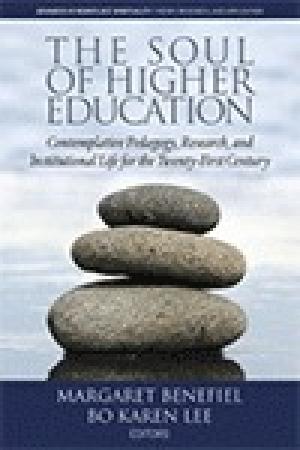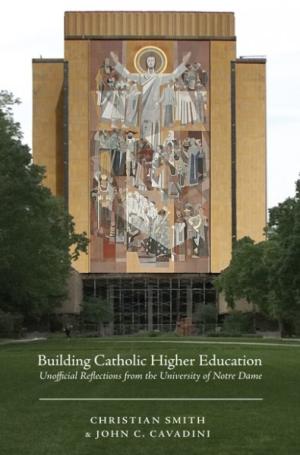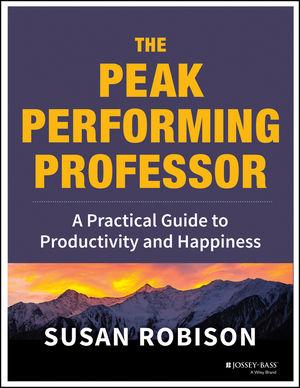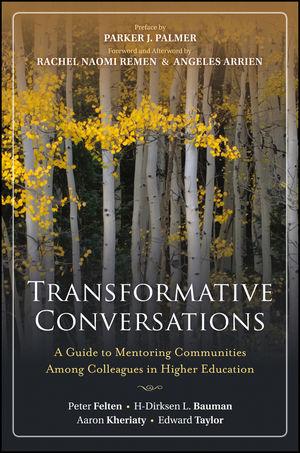Resources by Patricia O'Connell Killen

The Soul of Higher Education: Contemplative Pedagogy, Research and Institutional Life for the Twenty-first Century contributes to an understanding of the importance and implications of a contemplative grounding for higher education. It is the sixth in a series entitled Advances in Workplace Spirituality: Theory, Research and Application, which is intended to be an authoritative and comprehensive series in the field. This volume consists of chapters written by noted scholars from both Eastern and Western traditions that shed light on the following questions: • What is an appropriate epistemological grounding for contemplative higher education? How dues the current dominant epistemology in higher education mitigate against contemplative teaching, learning, and research? What alternatives can be offered? • How can a contemplative culture be nurtured in the classroom? What difference does that culture make in teaching and learning? What is the role of individual and institutional leadership in creating and sustaining this culture? • What is contemplative research? How can the emerging field of contemplative studies fit into the twenty-first-century university? • What can faculty and students learn from contemplative practices about how to find peace of mind in a world of higher education characterized by increasing complexity, financial pressures, and conflicts? • What does a contemplative organizational structure look like in higher education? How can committees, faculty meetings, and administrative teams use contemplative practices to work more effectively together? • How can contemplative decision-making processes be used in higher education? Given hierarchies, turf wars, and academics’ propensity for using argument as a weapon, is it possible to introduce contemplative practices into decision-making situations in appropriate ways? (From the Publisher)

In this slim volume, Christian Smith, a sociologist of religion on the faculty of the University of Notre Dame, takes on a pivotal question for the future of Catholic higher education: faculty engagement with Catholic intellectual tradition. Exploring the convergence of Notre Dame’s three strategic goals – to provide an unparalleled undergraduate education, to gain recognition as a globally premier research university, and to remain thoroughly and distinctively Catholic – Smith brings into sharp focus two fundamental issues: (1) that any faith-grounded university’s capacity to fulfill its mission rises and falls on the knowledge, quality, and dispositions of its faculty; and, (2) that Catholic universities must wrestle with how their faculties engage Catholic intellectual tradition in their academic disciplines. His wrestling with these issues makes the book worth reading for anyone involved in faith-based higher education. In the first chapter Smith lays out the texts from which he will work: the University of Notre Dame’s mission statement, Fr. John Jenkins’ inaugural presidential address, excerpts from Jenkins’ annual addresses to faculty, and Provost Tom Burish’s letter announcing a committee to explore hiring outstanding Catholic faculty. In four subsequent chapters Smith details the assumptions behind these texts with their implications for faculty; elaborates a range of ways that faculty, whether Catholic or not, can support Notre Dame’s mission; proposes what the pursuit of social science disciplines might entail in a context where Catholicism matters; and, takes a hard look at whether it is possible for Notre Dame, or any other faith-grounded university, to pursue three goals simultaneously – unparalleled undergraduate education, premier research status, and robust engagement with the Catholic thought across all disciplines. (He doubts that it is.) A paper by John Cavadini on the role of theology in a Catholic college or university serves as the appendix. Smith’s dialectical approach emphasizes boundaries. He asserts that universities “cannot meaningfully call themselves ‘Catholic’” unless “Catholicism as a distinctive approach to life and the world” significantly influences intellectual inquiry, scholarship, and teaching; initiatives in valuing social justice or in spiritual formation will not suffice (65). His chapter detailing the “tensions, trade-offs, and dangers” involved in attempting to achieve excellence in undergraduate education and premier research status “in an institutional, cultural, and pedagogical context that is robustly Catholic” is refreshingly practical and pragmatic (78). Smith recognizes the challenge involved in an academic department attempting to maintain coherence with some faculty focused on teaching, others on research, and still others on Catholic dimensions of a discipline. At points Smith is nostalgic for an era when Catholic universities were Catholic by virtue of their enmeshment in the webs of a subculture. He is far more anxious about the prospects for maintaining the Catholic character of universities than is John Haughey, S.J., whose Where is Knowing Going? The Horizons of the Knowing Subject (Georgetown University Press, 2009) offers an alternative, analogical approach to the question. Still, Smith makes his case that Catholic universities cannot maintain a robust Catholic identity without a critical mass of faculty members who both understand and engage Catholic thought and life critically and faithfully. Read together, Smith and Haughey could animate a vital conversation in which Catholic college and university faculties need to participate.

Today the question of how to manage the three dimensions of a professor’s work – teaching, writing, and institutional citizenship – in ways that are satisfying, sustainable, have integrity, and allow for other dimensions of “having a life,” is increasingly fraught. Multiple contextual factors contribute to this state of affairs, from economic conditions that result in fewer tenure-stream positions to demands for greater accountability and the questioning of the value of a baccalaureate degree. The contemporary situation creates uncertainty for faculty, most of whom have made significant investments to become professors. Uncertainty feeds anxiety that grows into distraction that saps energy and enjoyment in the work. This is bad for professors and for their universities. Enter Susan Robison, psychologist, former full professor, and faculty development expert. Hardly naïve about larger contextual factors impinging on the professorate, Robison offers a way forward: teaching faculty practices of self-regulation that “increase their own productivity and satisfaction in areas over which they have control” – their own lives and work (xv). Robison presumes that faculty become professors motivated by deep purposes to which they are committed. Purpose grounds aspirations and commitments. It anchors internal coherence to satisfying lives in which professors accomplish good work as teachers, scholars, and university citizens. From this basic assumption flows Robison’s framework: (1) capture the energy or “power” of one’s deep purpose and articulate that purpose and the mission, vision, and goals that flow from it; (2) establish priorities, organize projects, and cultivate work habits that align with purpose; (3) develop interpersonal skills and cultivate mutually supportive relationships; and, (4) engage in the self-care essential to long-term health. After explaining and providing both reflective exercises and concrete strategies for each element in the first four parts of the book, Robison applies her framework very explicitly to the roles that professors occupy – professor, teacher, scholar, servant leader, and human being – in part five. Her claim: when individual faculty “define productivity and happiness for themselves with a view to their own long-range success,” the results will benefit both faculty and institutions (11). Composed in a workbook format, readers can turn to the sections of the volume that most interest them, or read from beginning to end. The volume employs theories and strategies from a range of fields, selected, conceptualized and presented specifically for faculty. This is one of its strengths. It also has an extensive bibliography for those wishing to pursue a particular topic. Robison’s positive tone and direct, uncomplicated approach likely will lead some readers to dismiss The Peak Performing Professor as too simple, too normal. And the workbook format leads to some repetition. But for those trying to compose lives and careers, those looking to find a way to retrieve the lost pleasure of being a professor, and those charged with supporting others to do good work, this is a book worth reading

This book stands out for its simplicity of style, transparency of voice, and modesty of ambition. It makes an argument about the power of intentional “mentoring communities,” composed of peers at different stages of career. The authors ground the argument in their experience participating in such a community under the auspices of the Fetzer Institute and also organizing and participating in mentoring communities on their own campuses over a two-year period. Their conclusion: mentoring communities, by supporting and challenging their members to “identify and reconnect to their core values, revitalize their individual dreams, and renew their commitment to goals that serve as the foundation for their work and their lives,” help their members orient their choices and creative projects around their deep purposes and values, and so animate, from within the group, reform in higher education (5-6, 31, 87-88). The authors demonstrate what too few believe: that the solution to what ails higher education, in no small part, lies within the people whose vocation it is to teach and support students’ learning. The transparency of their reporting and reflection on experience lends credibility to the authors’ argument – they “show” far more than they “tell.” The authors refreshingly avoid both indulgence in lament and speculative grand proposals. In language free from jargon yet saturated with the vibrancy of lived experience, they provide a readily accessible “how to” for initiating mentoring communities. These are decidedly not committees, which have “institutional mandate[s] and goals,” or therapeutic groups – which focus on “participants’ emotional wounds and disorders” (20-21). Rather, they are groups of four-to-six colleagues who commit to mutual mentoring, with the intention of helping “participants explore, form, articulate, and live out of their values” (21). The groups focus on “strengths and virtues” not “wounds and weaknesses” (21). The authors refer to these communities as “formation mentoring communities,” using the term “formation” to highlight the orientation around helping members develop as whole persons, cultivate “shared human capacities,” and advance “each person’s particular gifts and talents” (14-15). This slim volume is a superb guide to preparing groups to enter into and sustain serious conversation. In four short chapters the authors describe mentoring communities, elaborate on the practice of conversation, explain how to organize a mentoring community, and illustrate how to do collaborative leadership in the groups. In the last chapter they argue for the centrality of such communities to any serious institutional change in higher education. The authors also provide a rich bibliography of resources on education, convening and facilitating, dialogue and conversation, formation and spiritual direction, mentoring, and community. While not directed explicitly to theological education or religious studies in the liberal arts, deans, department and program heads, and faculty in these settings should read this book. It will provoke thinking regarding and offer strategies to those desirous of welcoming new colleagues into institutions; those wanting to provide better support for colleagues contemplating the next phase in career or life; those wanting to support graduate students; and those concerned with how to compose more satisfying, sustainable, meaning or purpose-anchored lives across the career span.